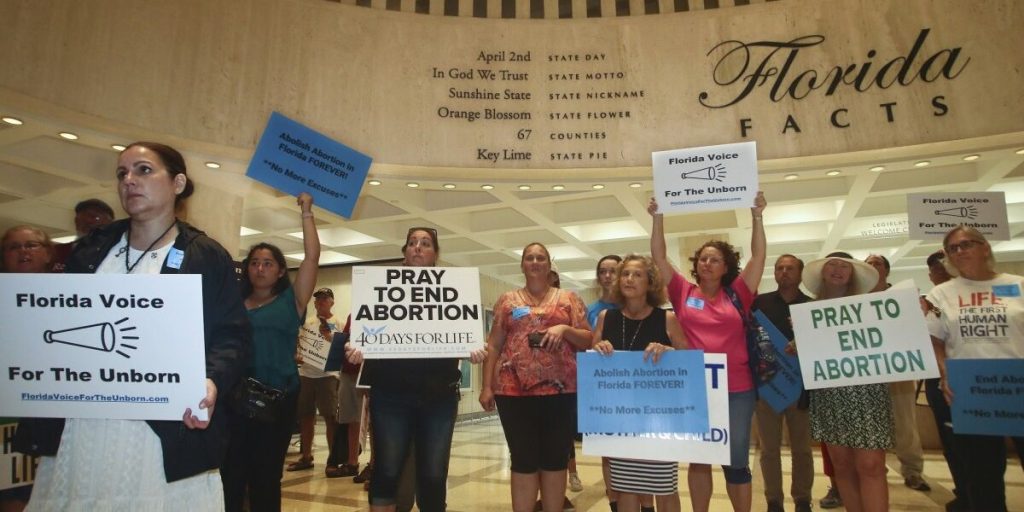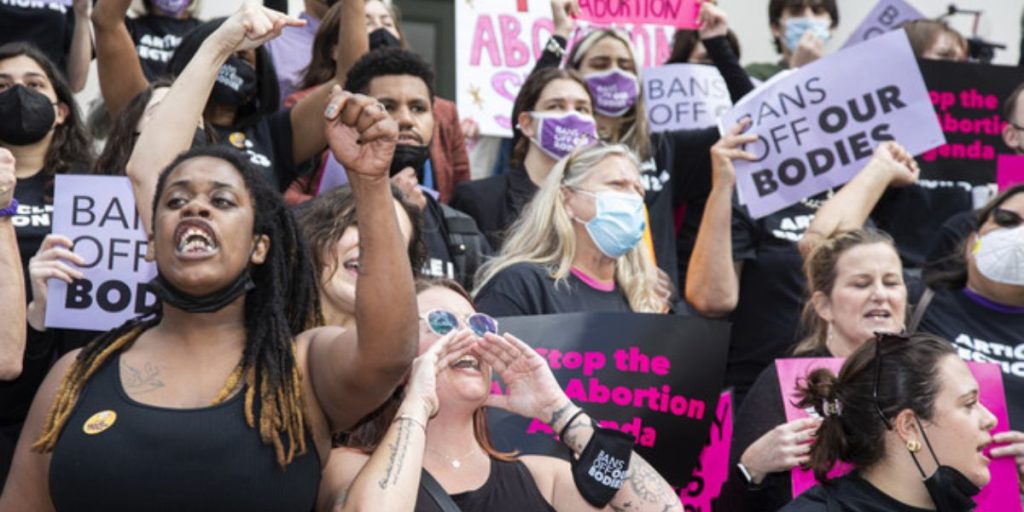Bristol, Virginia, is more than eight hours’ journey from Jacksonville, Florida. It is more than ten miles from Orlando and about fourteen miles from Miami. Despite the distance, Bristol Women’s Health Center is bracing for an influx of women from Florida seeking abortions when a tighter ban takes effect next month.
For many people who would have gotten abortions in Florida, the clinic in southwest Virginia will become the nearest practical alternative — as it already is for a large portion of the South — following a Florida policy change that is expected to have far-reaching consequences beyond the state’s borders.
“The majority of the patients we serve come from banned states,” said Karolina Ogorek, the clinic’s administrative director. “I think that Florida will just become another one of the states that we serve.”
On Monday, the Florida Supreme Court upheld the state’s abortion restriction after 15 weeks of gestation. This move authorizes another, tougher restriction to take effect on May 1, making abortion illegal in the state after six weeks of gestation – before many women discover they’re pregnant.

Related: The US State With the Highest Abortion Rate
The ban makes exceptions for pregnancies caused by rape, incest, or human trafficking, or that endanger the woman’s life or physical health, as well as serious fetal defects.
In a separate but related decision, the court approved a referendum in November that will allow state voters to determine whether to change the state constitution to allow abortion until viability.
According to Stephanie Loraine Piñeiro, executive director of the Florida Access Network, the statute and 24-hour waiting period for abortion will result in a “total ban” in practice.
And traveling to a physician elsewhere, she added, will raise the average cost of abortion to around $4,000, including transportation, housing, meals, child care, and clinic costs, which is roughly double what it is currently. That will put pressure on organizations like hers, which frequently reach their financial limit long before the end of the month, as they shift to assisting people in finding alternative care.
Piñeiro cautioned that this might leave people stranded if they are unable to take time off work, afford travel, arrange child care, or lack necessary identification.
“The people who are most marginalized are going to continue to not have access,” she went on to say.
She added she expects some of the state’s clinics to close due to a shortage of patients.
Currently, the average distance to an abortion facility for Florida residents is 20 miles (32 kilometers), according to Caitlin Myers, an economics professor at Middlebury College in Vermont who analyzes the impact of abortion laws. However, once the new restriction takes effect, the average distance to an abortion provider after the first six weeks of pregnancy will be 584 miles (940 kilometers).
And that only takes patients to North Carolina, where two in-person visits are necessary 72 hours apart to have an abortion – and only for the first 12 weeks of pregnancy in most situations.
It’s more than 100 miles (160 kilometers) to Virginia.
Some areas already have long drives to the nearest abortion providers—eight hours from San Antonio, Texas, to Santa Teresa, New Mexico, and nine from New Orleans to Carbondale, Illinois, or Houston to Wichita, Kansas. However, because of location, South Florida will be the most densely populated area in the United States with the least access to in-person abortions after the first six weeks.
Georgia and South Carolina, which have restrictions that begin after around six weeks, and Ohio, which had a similar one for a while, have seen roughly half as many abortions since those policies went into force. Some patients can get an abortion closer to home earlier in their pregnancy instead of flying.

The new prohibition will affect more than just Florida citizens.
“Florida is a really important state for Southern abortion access, and it has been a state that has experienced a surge in travelers from Georgia and Alabama, Mississippi, and Louisiana who are traveling out of those states, avoiding near total or six-week bans to facilities,” Myers went on to say.
Of the 84,000 abortions performed in Florida last year, around 7,700 were for people who live outside the state. The majority of those patients will now have to travel farther for access.
The total number of abortions in the country has been relatively steady since the United States Supreme Court overruled Roe v. Wade in 2022, ending a nationwide right to abortion. However, the specifics have altered.
Pills are used far more frequently than surgery, with a significant increase in prescriptions via telehealth — including to patients in places with provider restrictions and regulations aimed at protecting such prescriptions. However, there may be legal tests to determine if these protections are valid. And the United States Supreme Court is already contemplating a move to reverse approvals for one of the two medications commonly used in combination for medication abortions.
Planned Parenthood locations in Florida have been prepared for the tighter restriction to go into effect. Laura Goodhue, executive director of the Florida Alliance of Planned Parenthood Affiliates, said the organization has developed fast blood tests to detect pregnancy earlier, expanded education and contraception programs, and enhanced efforts to assist women in traveling elsewhere for abortions.
“We’re doing what we can,” she replied. “But we’ve as we’ve seen in other states, it’s still going to have a devastating impact on our public health system.”
Since states began enforcing limits following the 2022 ruling, the Bristol clinic has increased appointment slots in the afternoons, Saturdays, and certain Sundays, and has adapted to the possibility that patients may be late due to traffic bottlenecks as far away as Atlanta.
“In order for them to come to Virginia, there’s a lot of planning involved,” said Ogorek. “It’s not just taking a few hours off of work and driving 20 minutes”
Learn More: The US State with 2nd Highest Abortion Rate